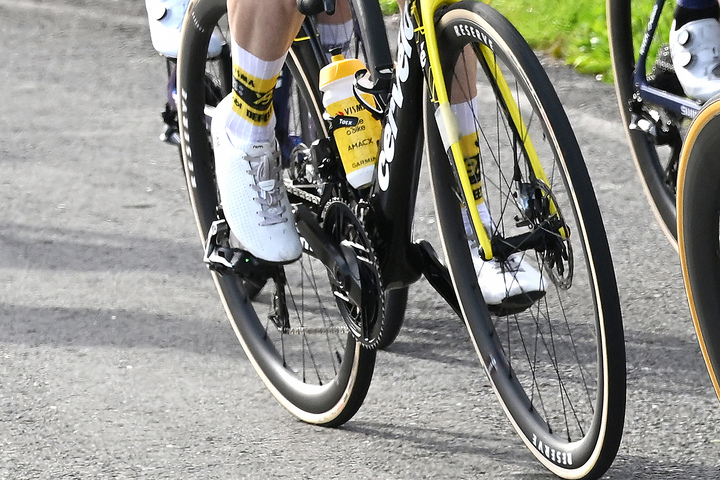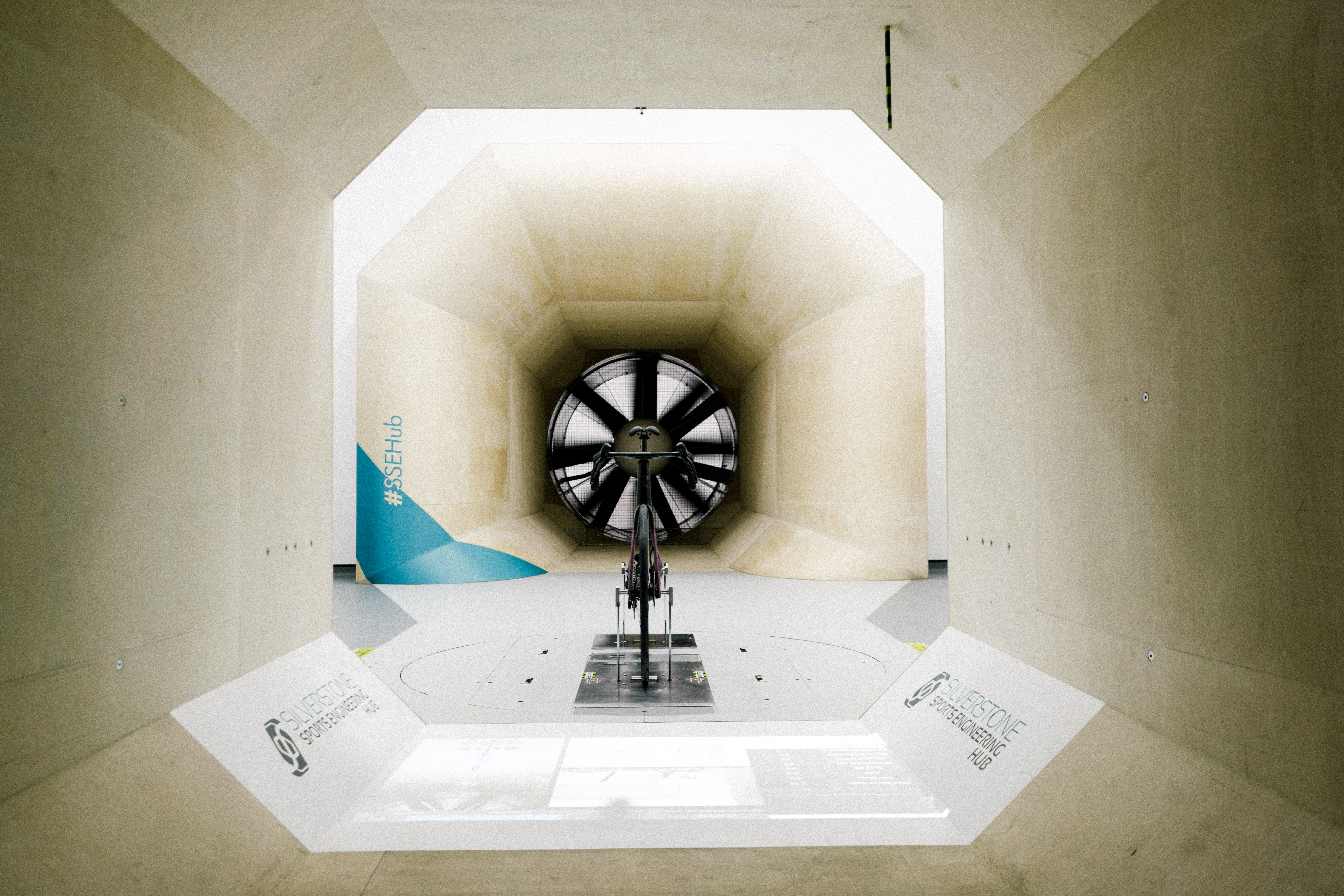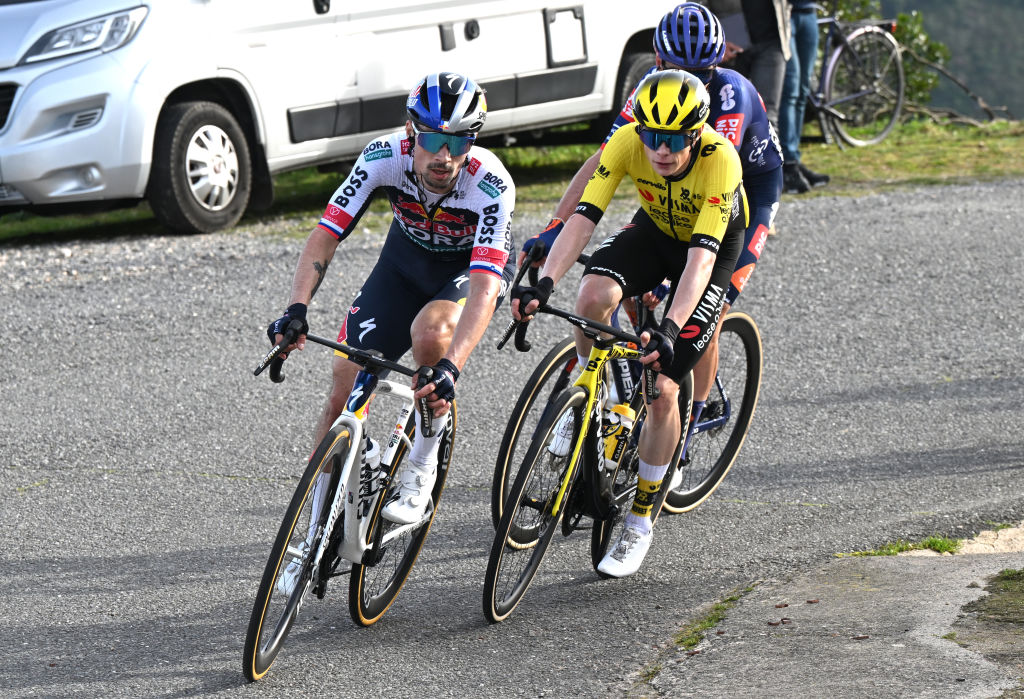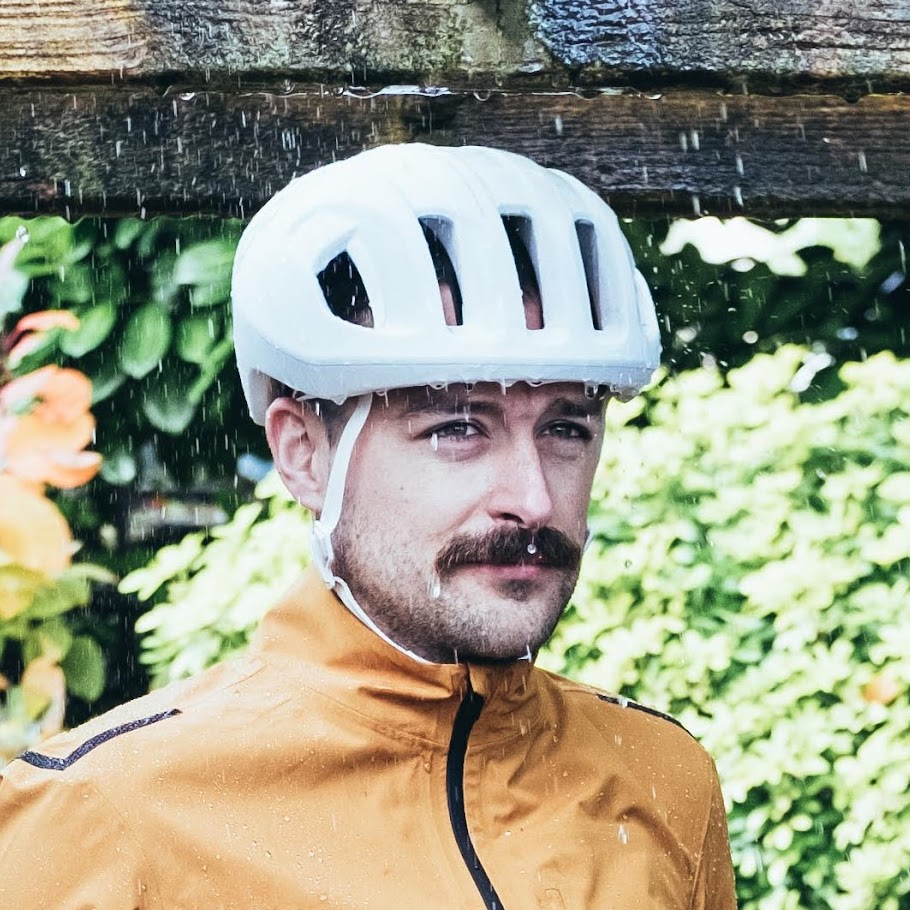Why is Jonas Vingegaard using tiny 150mm cranks?
Is it for bike fit reasons, aero, or something else entirely?

This week the collective bike tech nerds of Instagram were treated to the news that, perhaps in an effort to one-up longtime rival Tadej Pogačar, two-time Tour de France champion Jonas Vingegaard was spotted at the Volta ao Algarve using 150mm cranks.
In April of 2024, Cyclingnews reported that Tadej Pogačar had made the switch from 172.5mm to 165mm cranks to improve his cadence and aerodynamics. Not to be outdone, it appears that Visma-Lease a Bike has switched to shorter cranks too. It's not just for Jonas Vingegaard, but for numerous riders, with reports that Wout van Aert is down to 160 or 165mm. Vingegaard is perhaps the most prominent, partially because he is the team’s key rider for the Tour de France, and also because he is one of the most diminutive figures at 175cm tall, and as such is likely to need shorter cranks compared to his more lofty teammates.
A post shared by iBIKE STUDIO (@ibike_studio)
A photo posted by on
150mm cranks for Vingegaard
Let’s start with the actual cranks in question. First spotted by bike fitter ibike_studio Instagram page before quickly being taken up by the ever-useful Cycling Spy, it appears that Vingegaard has swapped his Sram Red crank arms out for de-badged Sram Rival ones, still mated to the Red chainrings.
A quick internet search reveals that finding Rival cranks in a 150mm length is a fool’s errand. So it’s possible - likely in fact - that these are a custom set. In some crank models, the crank arms are common throughout the size range, differing only in where the hold for the pedal axle is drilled, however inspection of the footage of these cranks reveals that the spindle is at the end of the crank arms, so these aren’t simply a set of longer Rival cranks drilled in a different place.
If you’re going for a custom set of cranks, why not just get a set of Red cranks made? Well, that comes down to the cost of production. As I found out when I aimed to discover why bikes cost so much money, the cost of creating the mould for a carbon fibre product, along with the labour needed to lay it up would be prohibitive for a single set of cranks. The forged alloy construction of the Rival cranksets is likely much easier to adapt to smaller sizes for limited product runs, and while the pros often get the best, sometimes they have to make do when it comes to custom options.
Accepting that he’s using extremely short cranks, at least for the near future, the next question is why. That applies not only to Vingegaard but also to anyone else (pro or mere mortal) who has or is considering making the switch. Luckily for you, I have also swapped from 172.5 to 165mm cranks in the last year, so I have some skin in the game.

The aero argument
At the most basic level, shorter cranks are just smaller, reducing the frontal area of the bike by a small amount at all points when the cranks aren’t horizontal. The maximum effect of this will be with the cranks in the vertical position – but even at the most minor scale the rider is having to push the arms through the air for the entirety of the revolution, but at this scale, the difference to rider fatigue is likely utterly negligible.
Get The Leadout Newsletter
The latest race content, interviews, features, reviews and expert buying guides, direct to your inbox!
More than just being more aerodynamic in and of themselves, the theory is that shorter crank arms make the rider more aero too. With shorter crank arms the lower leg (with a big foot at the end of it) doesn’t extend as far down into the clean air around the lower part of the bike, and likewise, the knees don’t extend up as high.
Given the track is really where the forefront of aerodynamics on the bike lie, I asked Red Bull-Bora-Hansgrohe’s Head of Engineering, and former hour record holder Dan Bigham if there was a precedent for using shorter cranks on the track, to which the answer was pretty unequivocal:
“I think typically track riders have only ridden 165 or 170 on track since the dawn of time. I went down to 160mm from 170mm in 2023 [the year after the hour record]”
When asked about the aerodynamics, Bigham kindly put me in contact with the Head of Aerodynamics for Visma-Lease a Bike (and formerly of WattShop), Jamie Lowden. I asked Lowden if this was an aero decision, and his response was that he didn’t actually have an answer to that, but that I should speak to the biomechanics department.
Given the meticulous nature of pro cycling, and of Visma-Lease a Bike especially, it’s probably safe to assume that if the Head of Aerodynamics wasn’t aware of it as an aero mod, it probably wasn’t for aerodynamic reasons; The plot thickens.

The biomechanical argument
From my own experiences having moved from 172.5mm cranks to 165mm I have some knowledge, thanks to working with the excellent bike fitting of Jon Wild at Pedalling Perfection, of why changing to shorter cranks might be beneficial.
As riders look to get further over the bottom bracket, with saddles often slammed further forward, the effective space for the legs gets shorter thanks to the setback angle of the seat tube. With a saddle slammed forward on the rails, as we can see in Vingagaard’s 2023 race bike, a too-long set of cranks could result in over-flexion of the knees at the top of the pedal stroke.
Furthermore, it also results in a less acute hip angle at the top of the pedal stroke, and particularly in super aggressive riding positions it can help avoid one’s knees hitting one’s chest. In consultation with Wild, though, he suggests this is likely not why Vingegaard has opted for shorter cranks.

Power generation and fatigue
According to Bicycling Science, an incredibly useful book covering all things biomechanical, aerodynamic and plenty more besides, a 1999 study of varying crank length shows the highest average power was achieved with 180mm cranks, which also came out on top in terms of power generation at peak power (i.e. sprinting). It was noted that longer cranks came out on top too at the end of tests, when riders were more fatigued. These studies were conducted with a single subject however, and so don’t really account for any biomechanical considerations - you can’t win a race if you’ve injured yourself.
At a simpler level, a set of shorter cranks will result in a higher cadence to spin the same gear ratio. A higher cadence for Vingegaard (and any other rider) should in theory mean their muscles are working less hard for the same power output. The old adage of ‘spinners are winners’ rings true somewhat here, and the reduction in muscle fatigue could help keep Vingegaard’s legs fresher (assuming his aerobic capacity is up to the job, as that will be taking up the slack) at the back end of a stage or race.
While shorter cranks mean that the knee is under less flexion at the top of the pedal stroke, it also means that it is more flexed at the peak drive phase of the pedal stroke, with some benefit to power generation ‘to a point’ according to Wild, who was also at pains to point out that while there may be benefits in terms of sporting performance at the top level, where fractions of percentages can be the difference between defeat and victory, that using too-short cranks can have detrimental impacts too, framing it in terms of an arm workout instead as a cautionary tale to anyone simply looking to emulate the professionals:
‘Just do half a bicep curl forever and you start to get some weird muscle developments’.
While aerodynamics has been dialled to a fine art, biomechanics and the interplay of human and machine are less well understood from a pure performance standpoint, despite being pretty well covered in terms of injury prevention. Bigham, again, sums it up pretty well, showing that ultimately we don’t really know why:
"I think it’s an accepted area of research and testing nowadays, although there is generally poor understanding of the physics of changing crankarm length and how that impacts on power, torque, cadence, foot speed, and pedal force, so the conversation gets muddied."

Will joined the Cyclingnews team as a reviews writer in 2022, having previously written for Cyclist, BikeRadar and Advntr. He’s tried his hand at most cycling disciplines, from the standard mix of road, gravel, and mountain bike, to the more unusual like bike polo and tracklocross. He’s made his own bike frames, covered tech news from the biggest races on the planet, and published countless premium galleries thanks to his excellent photographic eye. Also, given he doesn’t ever ride indoors he’s become a real expert on foul-weather riding gear. His collection of bikes is a real smorgasbord, with everything from vintage-style steel tourers through to superlight flat bar hill climb machines.
You must confirm your public display name before commenting
Please logout and then login again, you will then be prompted to enter your display name.